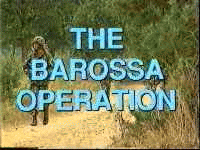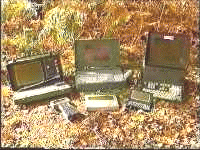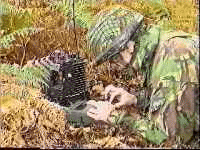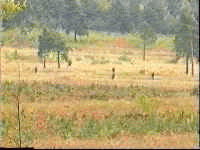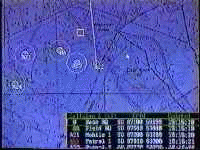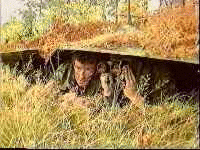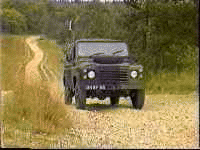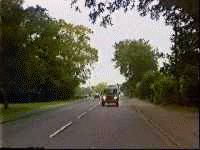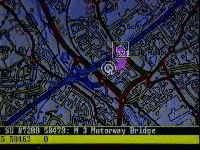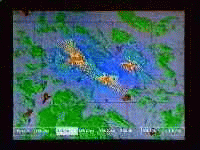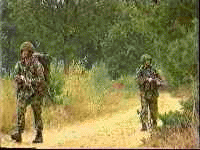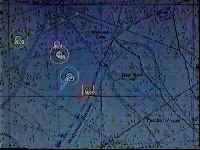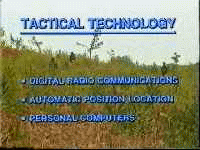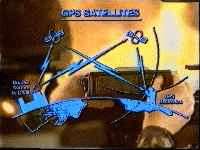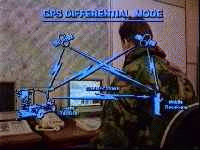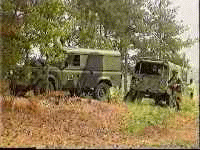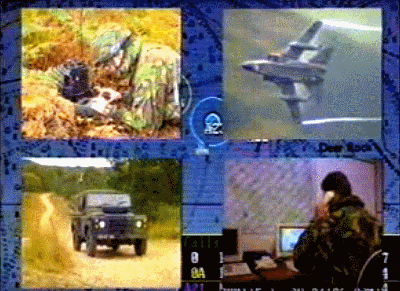These pages may not present clearly on some small smartphone screens; please use a normal large screen on a desktop, laptop, or tablet in landscape mode. Thankyou.
© Robin Lovelock.
















Home .
About .
Contact .
GPS .
Downloads .
Business .
AVL .
Links .
History .
Ferranti .
SHAPE .
EASAMS .
Family .
Holidays .
AsOnTV .
Snoopy
Links above, on all Robin's pages, take you to others. e.g. "Contact", "AsOnTV", "Snoopy".
Last update: 11:45am ( 1145 Z/GMT/UT/GPS Time ) Friday 22nd November 2024.
Curriculum Vitae ( CV ) for Robin Lovelock
Introduction by Robin Lovelock, born in May 1947 ...
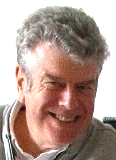 I am NOT seeking paid work, but can sometimes help those who help me or others. "Business" can overlap with "Charity" ;-)
I am NOT seeking paid work, but can sometimes help those who help me or others. "Business" can overlap with "Charity" ;-)
I retired decades ago, and in recent years my skills have been used on hobbies and charitable causes:
usually a matter of putting the right people in contact with one-another. This includes use
of International News media: see my
AsOnTV
One reason for this "Robin's CV" is to help guys giving me advice. They may see areas where we have common experience.
It also reduces the risk of friends "telling grandma how to suck eggs". Although, I probably lost the knack in
the early 1950s, when my mates and I might climb trees, to steal a birds egg, to add to our collections.
Sorry about that ;-)
A printable copy of this "RobinsCV" page, in English, is on
robinscv.pdf
which MAY be a recent copy, and MAY have a reasonable layout on A4 paper pages.
The good thing about you looking at a paper copy is that links will not work
on paper ( yet ? ), and you are less at risk of spending hours on some of Robin's many web pages or videos
- and getting distracted from reading this C.V. :-)
In recent years, some employers have been nervous about asking for a photo of the applicant,
in fear of discrimination based on race, gender, and/or age.
I make no apology for this one, and other pictures here - that often say more than a thousand words :-)
I also include links, but hope the important information is in the body of this document.
Note the translation flags - that should work. Many guys have their CV with a photo on Linkedin.
But look for the CV of a prominent journalist, businessman, or politician, and you will probably
find them on Wikipedia, or their own web site(s), with lots of links, pictures, and videos ;-)
My employers have included
Radyne Radio Heaters in Wokingham
,
Ferranti Digital Systems in Bracknell
,
NATO SHAPE Technical Centre in Holland
,
EASAMS (Elliot Automation and Advanced Military Systems) in Frimley.
,
and my own business
Sunninghill Systems based in Sunninghill, Ascot.
Whatever my work,
I would describe myself as a "Systems Engineer", in the sense that a "System" includes more than
just communications, computers, and software. Most also include people, and the procedures they follow.
Some systems obviously include a LOT more. e.g. a space rocket ;-)
I already had important industrial experience before graduation in 1969 with a B.Sc ( 2.1 ) in
Electrical & Electronic Engineering. It was a "sandwich course", spread over 5 years, including
6 month periods in Industry. For me that was
Ferranti Digital Systems in Bracknell.
Before that, I'd done a sandwich OND at High Wycombe Technical College, with two
6 month periods at Radyne in Wokingham - including in their Laboratory.
You may wish to consult
https://en.wikipedia.org/wiki/Curriculum_vitae
- the Wikipedia account of "Curriculum vitae" or "C.V.". e.g. one or two A4 pages is typical, but FAR more is typical
in the Academic or Medical professions. I am certainly chopping the raw material back: "less is better" ;-)
Personal Details ( Public for decades on
www.GPSS.co.uk
including the
"Contact"
page )
...
Name: Robin Leonard Lovelock
Age: born in May 1947, so by the end of May 2024, I was 77 years old :-)
Marital Status: Married to June since 1971; three girls: Samantha, Saskia, Michelle.
Address: 22 Armitage Court, Sunninghill, Ascot, Berkshire, SL5 9TA, UK.
Landline Telephone: (+44) 01344 620775. Mobile: (+44) 07736 353 404. Email: robin@gpss.co.uk
Spoken Languages ( decreasing strength ): English; Italian, Dutch, German, Sicilian dialect ;-)
Favorite Music:Rolling Stones; Beatles; Simon & Garfunkel; Leonard Cohen; Dire Staights; 1812 Overture; Paverotti;
Favourite Films or TV series: 2001 Space Oddesy; Dr Strangelove; Saving Private Ryan; Montalbano; Ice Cold Murders;
Computer Languages ( many weak or rusty ): BASIC, ALGOL60, FORTRAN, CORAL66, Fixpac, JOVIEL, ADA, C, C++, HTML;
Computer Operating Systems: Hermes; Princess; FOPS; DOS; RSX11M; VMS; Windows 3.1 -> XP -> 7, etc; Android; Chrome OS;
Hobbies: Photography; Film making; Tracking; Robotics; Radio Controlled Aircraft, Boats, etc; Wildlife; People; Pranks ;-)

Significant Achievements ...
Others can verify my claims here, from my linked pages, searching the Net, and/or talking to the right people ;-) This is all UNCLASSIFIED ;-)
- Pioneering work on Artifial Intelligence (A.I) and exploiting technology while a
Ferranti
Student Apprentice at
City University
.
- Completion of all NATO Data Link 10, and Automatic Radar Tracking software on
Ferranti
CAAIS ( Computer Aided Action Information System ).
This included support to UK Royal Navy during sea trials, and Sales support into Argentina.
- Working for the
SHAPE Technical Centre in Holland
as a Senior NATO Scientist, in design of future Tactical Air Control Systems (TACS) that became known as
Air Command & Control Systems (ACCS). This including writing reports, attending meetings, live air exercises, and - very important -
development of advance demonstrators, based on Ferranti FM1600B, then DEC PDP 11 computers, driving colour TV touch sensitive screens.
Management and implementation of the updates to the SHEWS ( SHAPE Early Warning System ), destined to be used by SACEUR,
and senior NATO commanders.
- Presenting a paper, on the SHEWS technology, at an International Conference in The Hague, in 1981, after joining
EASAMS
.
- Working as a Senior Manager at
EASAMS
to exploit my SHEWS software, and similar hardware products, to make what became known as the "EAMACS Demonstrator"
(EASAMS Architecture for Management and Control Systems). We soon achieved international publicity, such as in
"Janes Defence Weekly" magazine, and EAMACS contributed to EASAMS winning the 1 billion pound Sterling Malaysia contract
- but that took years ! :-)
My little "Air Command & Control Group" started to win much smaller - but successful - contracts, such as the EAMACS based radar tracking
and survellience system in Ras Tanurah, in the Gulf. Later in the 1980s, my small team developed pioneering use of military
IBM PC hardware, my software, and other hardware & software products - like speech sythasis and speech recognition.
Examples of this can be seen on that
EASAMS
page, and also the
AsOnTV
page - that "Barossa Operation" video: British Army soldiers with GPS in their helmets, being aided by "Tactical Technology".
Towards of the end of my time at
EASAMS
, after the
Mysterious Death
of a close colleage, David Sands,
I took over his task of negotiating, and winning, the ADCIS contact: Air Defence Command Information System - 100 million GBP
fixed price contract to supply the British Army with a large mobile computer network, for controlling their air defence
weapons, including Rapier and others. During the 3 months of contract negotiation, and early months of the ADCIS contract,
I ran the "System Design" team, recruiting more than another 30 staff of high calibre, and arranging them into several groups.
Others joined the ADCIS project, and I moved onto "Business Development" projects, including "DICS" ( Desert Interim Computer System )
to supply the "Desert Rats" British Army with "desert worthy" hardware for the Gulf War that had already started - to liberate Kuwait.
More (amusing) detail is on the
EASAMS
page.
I was tasked with submitting the "Business Prospects" to GEC-Marconi Head Office, not just for all of
EASAMS
, but for ALL the GEC-Marconi companies. I soon saw that their were only three likely business
opportunities: 1) the Malaysia Contract; 2) "Bowman" Army tactical radio to replace Clansman;
3) The new "Attack Helicopter" - no surprise - that became Apache ;-)
LOTS of other jobs, working with brilliant colleages, and some is in those links above. I soon realised my
decision to start my business was a good one, since I could see the collapse of the GEC-Marconi company
happening. It was a pity, since EASAMS were about to take over British Aerospace: the reverse happened ;-)
- "Sunninghill Systems" - Robin's own
Business
. This old page tells you the basics of the business: licencing my
GPS Software
, some of which dates back to my time at
Ferranti, SHAPE, and EASAMS. No, I do not makes lots of money, but I still own copyright and Intellectual Property
on stuff that is still ahead of much of what we see around us in 2024 and maybe the future :-)
Many will know that I like to get others to do the hard work: that's what some people call "Managing" or "Directing" ;-)
I have been fortunate in life, and so spend what hours I have, as efficiently as I can, getting others
to help me, themselves, and others. "Business", "Hobbies" and "Charity" often overlap ;-)
e.g. my website
NHSCare.info
, exploiting the amazing Pam Coughlan, has helped a lot of guys in the UK with dealing with physical and mental health problems.
e.g. getting the UK Goverment to obey the Law and pay for ALL care, both "Medical" and "Social". Maybe it is more than a coincidence,
that shortly after publication of my linked "Bluebell" page, in 2015, famous people "came out" on their mental health problems,
and the BBC dealt with it well. Sometimes "Friends of Friends" can be important ;-) Another example is my suggestion
of regularly publishing graphs of Total Deaths, seen in my
Covid19
page, being adopted by the Office for National Statistics (ONS). Useful far beyond Covid. e.g. performance of the NHS.
Some of the material may make you smile - "Army Humour" can help ? :-)
There are many potential News Stories on my
Press
page, and topics overlap. e.g. sometimes diverse subjects like
Hobbies
,
health,
Holidays
,
Tracking
, and business
can bring people and Governments together. "Make Love not War" as someone said :-)
Education ...
 Why ALL education here ? "Life's Learning Experience" ;-)
I learned much from my father,
Len Lovelock
.
Why ALL education here ? "Life's Learning Experience" ;-)
I learned much from my father,
Len Lovelock
.
1947 - 1952: Mostly looked after by mother Evelyn, including when she did local housework jobs.
1952 - 1953: Finchamstead Primary School.
1953 - 1958: Wescot Road Primary School Wokingham. First "The Huts". Failed the 11+ examination.
1959 - 1963: St Crispin's Secondary Modern School Wokingham. 7 "O Levels" including with distinction.
1963 - 1965: High Wycombe Colledge of Technology. Ordinary National Diploma ( thick sandwich ) OND.
Industrial training of two 6 month periods with Radyne, Molly Millers Rd, Wokingham, including Laboratory.
1965 - 1969: City University London. B.Sc ( 2.1 ) in Electrical & Electronic Engineering.
Thick sandwich with 6 month periods at Ferranti Digital Systems, Western Rd, Bracknell. Many Departments.
My final year projects at
City University
included Artificial Intelligence (A.I.) and interfacing
the Ferranti Pegasus computer * to a communications teletypewriter,
and getting it to do conversational computing, to play Noughts & Crosses
- that the Americans call "Tic Tac Toe". The A.I. project was done
using a more modern computer in Bracknell, with a light pen,
to recognise handwritten characters.
I also learnt "Sales Techniques", such as taking a client out for dinner,
result in City University buying a Ferranti FM1600B.
Tap on the picture of me with Pegasus* to know more.
* Pegasus, was the World's first production digital computer,
in production in 1949, following the Bletchley Park "Enigma"
code breaking project.
But that's all
History
:-)
Radyne Radio Heaters in Molly Millers Lane Wokingham ... Student Apprentice: 1963 - 1965
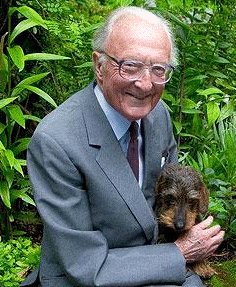 Edited extract from the end of that
History
page ...
pictures from my days at RADYNE in Wokingham, fresh out of St Crispin's School, and before joing Ferranti.
My dad Len Lovelock worked at Radyne, as did my uncle Ron Sharp, who managed the Radyne Laboratory: prototypes to support Sales.
Edited extract from the end of that
History
page ...
pictures from my days at RADYNE in Wokingham, fresh out of St Crispin's School, and before joing Ferranti.
My dad Len Lovelock worked at Radyne, as did my uncle Ron Sharp, who managed the Radyne Laboratory: prototypes to support Sales.
Radyne did pioneering work, exporting radio heating based equipment Wordlwide, such as for automated manufacture in the car industry.
Mr Spindler, my metalwork master at St Crispins, suggested that I do an OND at High Wycombe Tech, which is where I met Lord Peter Carrington
for the first time. when he presented me with a book at the end of my OND at High Wycombe Tech. 50 years later, I met his Lordship at his
grand family home on Bledlow Ridge :-)
The two 6 month industrial traing periods were at Radyne, the last being in their labs, where Uncle Ron was the Manager. I recognise that
fresh-faced Sales Engineer in the centre, who taught me the discipline of using an Engineering Log Book - a habit I never lost ! ;-)
Tap or Click on the pictures to expand.

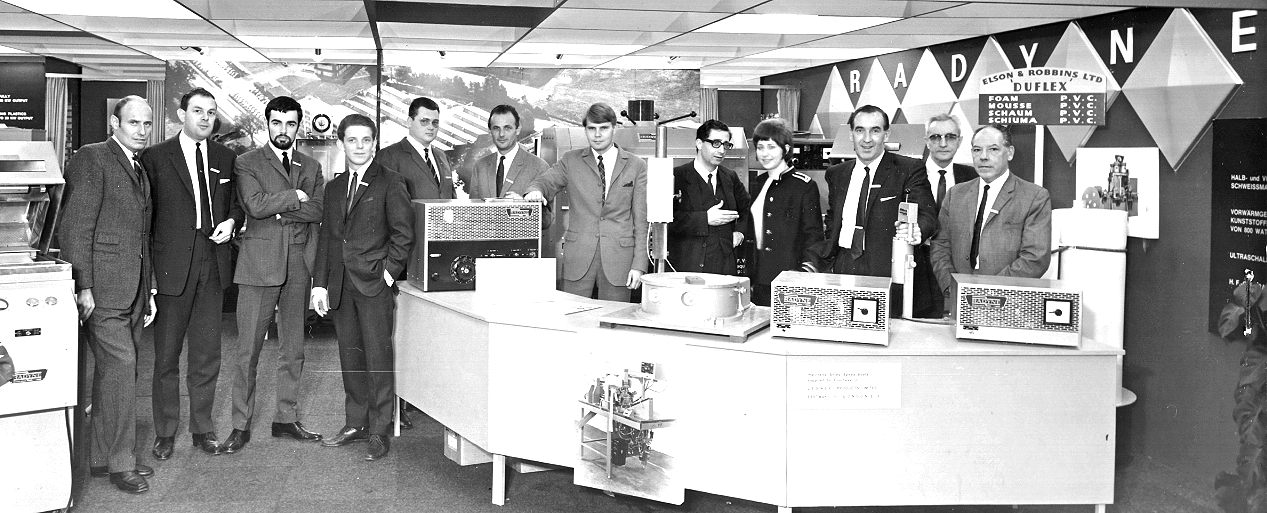


Ferranti Digital Systems at Bracknell ...
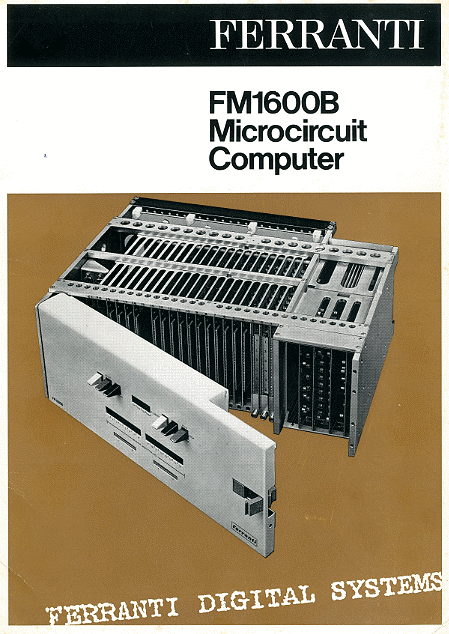
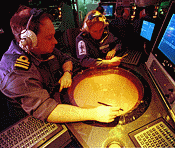 The FM1600B was the new Ferranti computer that found it's way into many systems, including the CAAIS
for the Royal Navy Frigates, which I worked on after graduation.
The FM1600B was the new Ferranti computer that found it's way into many systems, including the CAAIS
for the Royal Navy Frigates, which I worked on after graduation.
In Mike Scotts lab, I worked on testing the prototype of the FM1600B, built from Fairchild flatpacks.
By the time I was in my final year at City University, the FM1600B was in production, built using
Ferranti Integrated Circuits and Multi Layer Circuit boards.
It turned out that my tutor was on the lookout for something to replace the Pegasus. I said the right thing:
that it could do a fast shift in one third of a micro-second. I was soon handing over sales info,
and found myself being introduced to "wining and dining" by Ferranti Sales. I used this new experience
to my advantage in dating June ;-)
After graduation I worked on CAAIS, first doing all the NATO data link software, then finishing that for radar tracking.
Those were the days when a software team of six would complete a complex project in two years.
In later years, smaller projects would use hundreds of software engineers, over more years, and still
not be completed to the customers satisfaction. That's a Grumpy Old Man speaking ;-)
Something similar happened when I applied for a job for SHAPE Technical Centre in Holland in 1971.
It turned out they had just aquired an FM1600B, so that may have been why they recruited me
for a higher paid job of NATO Scientist than the one that I had applied for ! :-)
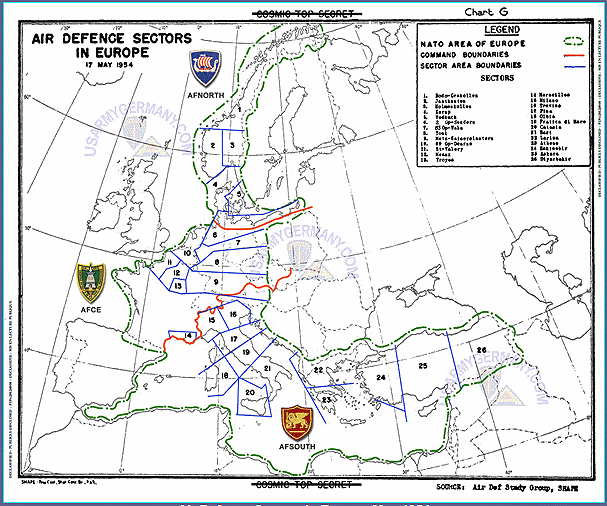
 1971-1981: After 6 months of "Positive Vetting" for the required security clearance, we moved
to Holland, and I worked for the NATO research establishment called SHAPE Technical Centre (STC). See footnote. e.g. NC3A.
My job title became "Senior Scientist" and my work included working closely with military officers,
including American USAF returning from Vietnam. I decided to write demonstration software, used in our Laboratory,
as a means of showing military officers our ideas, before we wrote these into our reports.
1971-1981: After 6 months of "Positive Vetting" for the required security clearance, we moved
to Holland, and I worked for the NATO research establishment called SHAPE Technical Centre (STC). See footnote. e.g. NC3A.
My job title became "Senior Scientist" and my work included working closely with military officers,
including American USAF returning from Vietnam. I decided to write demonstration software, used in our Laboratory,
as a means of showing military officers our ideas, before we wrote these into our reports.
I had the priveledge of managing the implementation of SHEWS - the SHAPE Early Warning System.
This supplied SACEUR with information from the NATO Europe Air Defence Systems,
from Northern Norway to Eastern Turkey.
Click on the map for more information.
SHEWS was desribed by SACEUR General Rogers as
"the best thing since sliced bread", and was presented at an international conference
in The Hague, a few years later.
It was in Holland that our first two daughters were born, starting with Samantha.

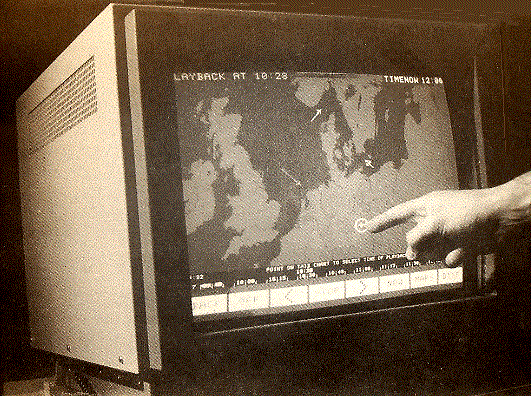
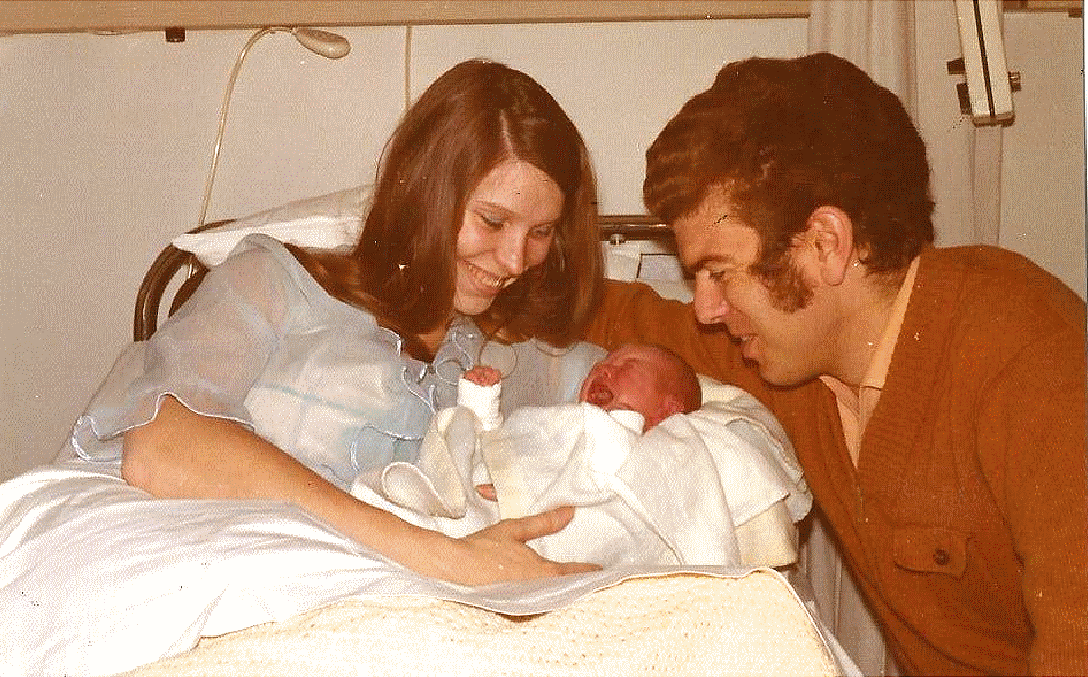 June and I remember the day of Samantha's birth, at home: 6th March 1974. Neither of us got much sleep that night,
and I drove June and tiny Samantha, the few miles to Leiderdorp Hospital.
June said she was fine, after an hour in the private room, where a nurse took this photo. I had time
to drive directly into work, and get there just in time, to brief DSACEUR about SHEWS.
This Brit, was deputy to SACEUR, and top of the UK Military.
I was ready, just in time, before DSACEUR, and his entourage arrived.
They sat down, just in front of me, sat next to my touch-interactive colour screen. My boss, John Unsworth, introduced me:
"This is Robin Lovelock: sorry about Robin's disheveled appearance; he has only just got in,
after being up all night, with his wife June, having their first baby". The first few minutes
of my "briefing" consisted of smiling faces of top brass, thrust close to mine, asking questions like,
"How is she and the baby ?", "what weight ?", "have you decided on a name yet ?".
I remember responding with answers like, "6.5 pounds" and "Samantha", despite
the fact that I had not made any written notes all that night :-)
June and I remember the day of Samantha's birth, at home: 6th March 1974. Neither of us got much sleep that night,
and I drove June and tiny Samantha, the few miles to Leiderdorp Hospital.
June said she was fine, after an hour in the private room, where a nurse took this photo. I had time
to drive directly into work, and get there just in time, to brief DSACEUR about SHEWS.
This Brit, was deputy to SACEUR, and top of the UK Military.
I was ready, just in time, before DSACEUR, and his entourage arrived.
They sat down, just in front of me, sat next to my touch-interactive colour screen. My boss, John Unsworth, introduced me:
"This is Robin Lovelock: sorry about Robin's disheveled appearance; he has only just got in,
after being up all night, with his wife June, having their first baby". The first few minutes
of my "briefing" consisted of smiling faces of top brass, thrust close to mine, asking questions like,
"How is she and the baby ?", "what weight ?", "have you decided on a name yet ?".
I remember responding with answers like, "6.5 pounds" and "Samantha", despite
the fact that I had not made any written notes all that night :-)

EASAMS (Elliot Automation Space & Advance Military Systems) Frimley ...
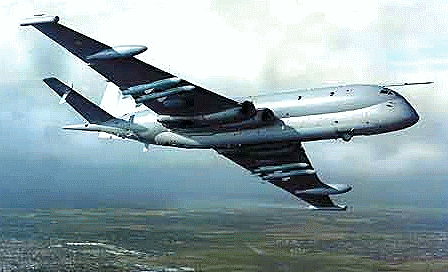 EASAMS made it's name in the 1960s, for how it managed the Nimrod Maritime Patrol Aircraft project.
It got acclaim in The House of Commons. EASAMS became known as the "Original Systems House". i.e. adopting the
"Systems Approach" on a project, considering all aspects, including hardware, software, and manpower
- including aspects such as Human Factors, procedures, and training.
EASAMS made it's name in the 1960s, for how it managed the Nimrod Maritime Patrol Aircraft project.
It got acclaim in The House of Commons. EASAMS became known as the "Original Systems House". i.e. adopting the
"Systems Approach" on a project, considering all aspects, including hardware, software, and manpower
- including aspects such as Human Factors, procedures, and training.
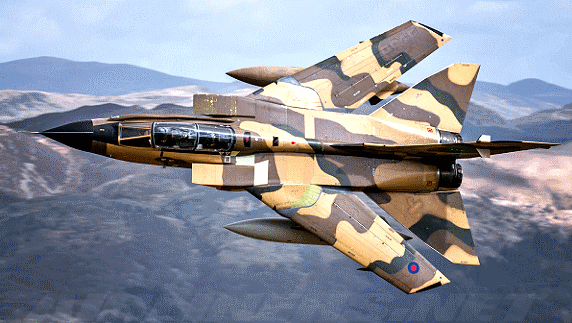 During the 1970s, EASAMS became a first level contractor under Panavia, to build the swing wing, Multi Role Combat Aircraft (MRCA),
that became the Panavia Tornado IDS - Interdiction Strike. Tornado was to be capable of delivering conventional or nuclear bombs,
flying at low level, exploiting technology pioneered in the cancelled TSR2 aircraft. (Tactical Strike Recconasance).
During the 1970s, EASAMS became a first level contractor under Panavia, to build the swing wing, Multi Role Combat Aircraft (MRCA),
that became the Panavia Tornado IDS - Interdiction Strike. Tornado was to be capable of delivering conventional or nuclear bombs,
flying at low level, exploiting technology pioneered in the cancelled TSR2 aircraft. (Tactical Strike Recconasance).
Tornado IDS was a UK/German/Italian project, with EASAMS, and the aircraft manufacturs:
MBB in Germany, SIA in Italy, and BAe in UK. MBB, SIA, and BAe built various parts, like fusilage, wings, etc,
and EASAMS handled the overall avionics design, including selection and contracting of computer, radars, head-up display, etc.
EASAMS also did the inflight software, and built an advanced test rig, to test the software.
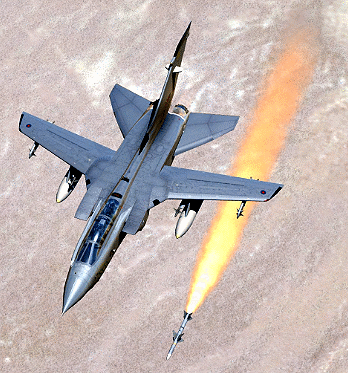 The UK RAF wanted a new Air Defence Fighter, and EASAMS soon had another project: Tornado ADV - the Air Defence Varient of Tornado.
The UK RAF wanted a new Air Defence Fighter, and EASAMS soon had another project: Tornado ADV - the Air Defence Varient of Tornado.
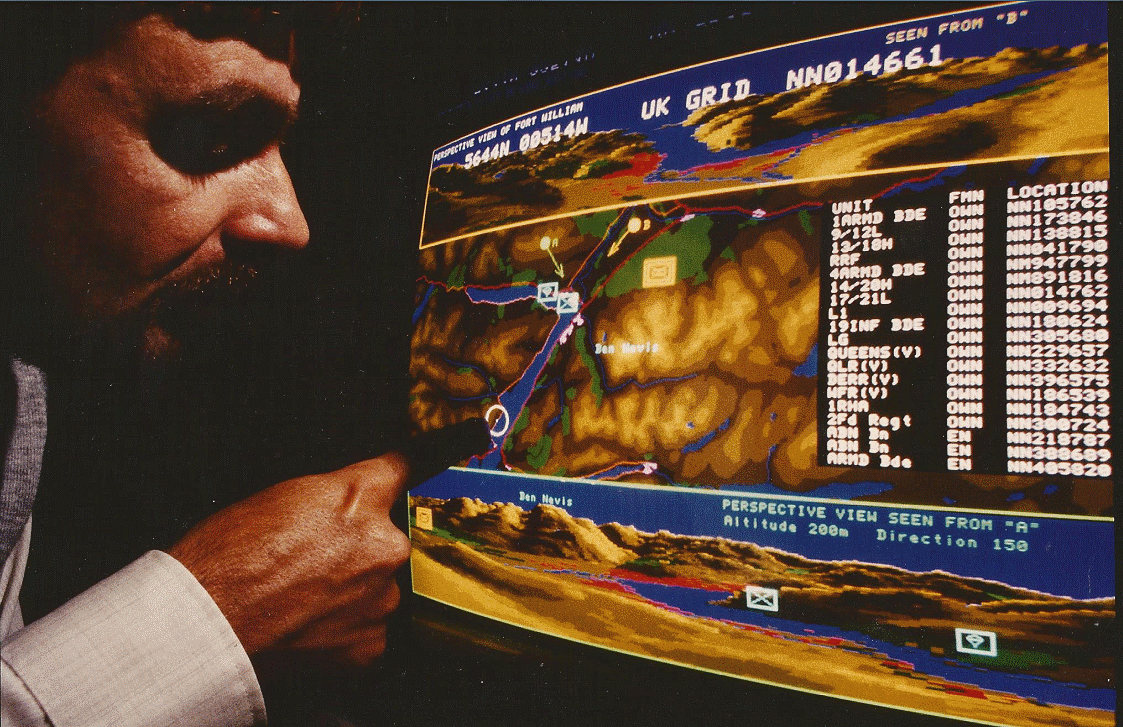 During the 1970s, I had been working as a senior NATO scientist in Holland, at SHAPE Technical Centre (STC) near The Hague.
There is enough on my
John Maniello
page about my time there, including my managing the implementation of SHEWS - the SHAPE Early Warning System.
This was installed in the mid 1970s, and included touch interactive colour displays,
driven by two PDP11 computers.
During the 1970s, I had been working as a senior NATO scientist in Holland, at SHAPE Technical Centre (STC) near The Hague.
There is enough on my
John Maniello
page about my time there, including my managing the implementation of SHEWS - the SHAPE Early Warning System.
This was installed in the mid 1970s, and included touch interactive colour displays,
driven by two PDP11 computers.
By 1980, we were thinking of returning home to England. Our first two daughters had been born in Holland,
and we needed to think about their education. We had been lucky in buying houses: first in Holland, in Zoterwoude,
and also in Sunninghill, before it was built. See
AMRA
and
Old AMRA Pictures
pages :-)
I sent my C.V. to several of the obvious companies within reach of Sunninghill, such as SDL and SSL. However, I got some
good tips from AVM Paul Mallory, who was retired from the RAF, but doing some consultancy in our Air Command and Control Group
at STC. He said that EASAMS, at Frimley, was the company within GEC-Marconi, earmarked for future C&C work. Also,
not to send my CV to the usual Personnel Department, but to Stanley Bonser, on the GEC Marconi board.
The result was my first interview being with Dennis Harris, running all the Tornado work, and the final
interview was with the EASAMS board, including Howard Surtees, Mitch, Daboo, and others.
Dennis told me that EASAMS had just won the UKAIR study, teamed with CSC, and - even more important to me -
I would get some "Private Venture" money to spend on a PDP11 based demostrator, exploting SHEWS hardware and software,
as a "door opener".
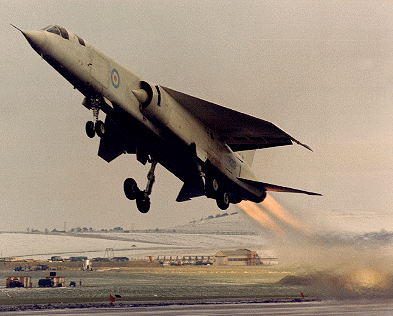
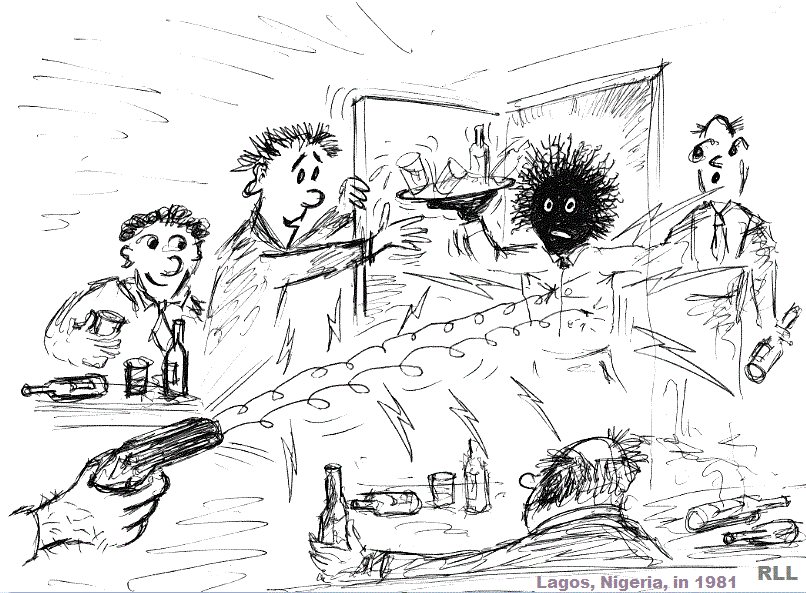 I started at EASAMS in January 1981, sharing an office with Richard Laws and Derek Hitchins, in the EASAMS premises in Park St, Camberley,
over Overs. Derek and Vic Piercey were working onsite on the UKAIR Study.
Park Street was home of the tri-national Tornado IDS team, with Germans, Italians, and us Brits.
There was also an EASAMS office in Munich, and we inherited the Munich Beer Festival Culture:
every office had a 'fridge to keep the beer at the correct temperature.
I started at EASAMS in January 1981, sharing an office with Richard Laws and Derek Hitchins, in the EASAMS premises in Park St, Camberley,
over Overs. Derek and Vic Piercey were working onsite on the UKAIR Study.
Park Street was home of the tri-national Tornado IDS team, with Germans, Italians, and us Brits.
There was also an EASAMS office in Munich, and we inherited the Munich Beer Festival Culture:
every office had a 'fridge to keep the beer at the correct temperature.
I ordered the PDP11, Genisco,
Barco, and other hardware, so was given other things to do until kit arrived. The first overseas sales trip was with Dennis
Harris, to Lagos Nigeria. What a week that was ! I just loved the demonstration of a Taser, by calling room service,
for more beers. Click on my cartoon to enlarge - if you dare. Later trips to places like Belgium, Egypt, and Saudi Arabia
were a joy, in their own way.
Some of the guys had worked on TSR2, and would look up at the framed photo of it in the hanger, and come over misty eyed.
I heard how a condition of buying Phantoms and nuclear bombs from the Yanks, was to destroy technical information about TSR2.
Good to see that the British Aerospace industry did recover, but how much stronger would it have been if TSR2 had gone ahead ?
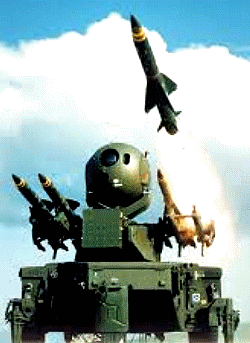 After the PDP11 Computer and colour display equipment arrived, within a few weeks, I soon had the demonstrator running.
The demonstrator was at Lyon Way.
Howard Surtees suggested we give it a name, as a "product" and it became "EAMACS":
EASAMS Architecture for Management and Control Systems.
He got the GEC Press Officer, Peter Rackam, to arrange a Press Conference,
which was a big success.
Jane's Defence Weekly
did a big splash about EAMACS.
That's where I learnt how to work with the Press ;-)
After the PDP11 Computer and colour display equipment arrived, within a few weeks, I soon had the demonstrator running.
The demonstrator was at Lyon Way.
Howard Surtees suggested we give it a name, as a "product" and it became "EAMACS":
EASAMS Architecture for Management and Control Systems.
He got the GEC Press Officer, Peter Rackam, to arrange a Press Conference,
which was a big success.
Jane's Defence Weekly
did a big splash about EAMACS.
That's where I learnt how to work with the Press ;-)
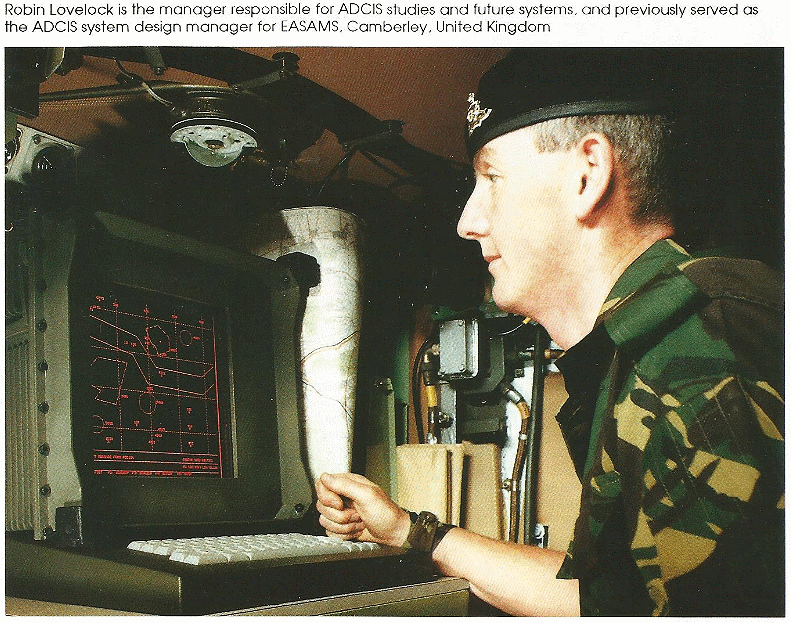 The guys in my little group completed several EAMACS Projects, all within budget and on time. The first was
the radar tracking system, installed at Ras Tanurah, in Saudi Arabia, supplied to ARAMCO. This took radar track
data from a local radar, and one up the coast, displayed the tracks, and automastically monitored if anchored
vessels strayed from their moored positions.
The guys in my little group completed several EAMACS Projects, all within budget and on time. The first was
the radar tracking system, installed at Ras Tanurah, in Saudi Arabia, supplied to ARAMCO. This took radar track
data from a local radar, and one up the coast, displayed the tracks, and automastically monitored if anchored
vessels strayed from their moored positions.
Another was an EAMACS demonstrator, supplied to Marconi Italiana, for deployment with the Italian Army
in their military exercise area in Sardinia. We enjoyed giving some work experience to the son of one
of the Marconia Italiana directors. He helped make EAMACS display in both English and Italian.
Our EAMACS demonstrators supported the much bigger C3 Project opportunities, such as Malaysia.
When I was recruited, it was just the study for the design of a Government bunker. Ten years later,
when the deal was closed, with the assistance of Maggie Thatcher, it was over one billion GBP.
EASAMS formed "Marconi Projects", led by Dennis Harris, who by then had become EASAMS MD.
The project not only included bunkers, nation wide communications, but also ships and aircraft.
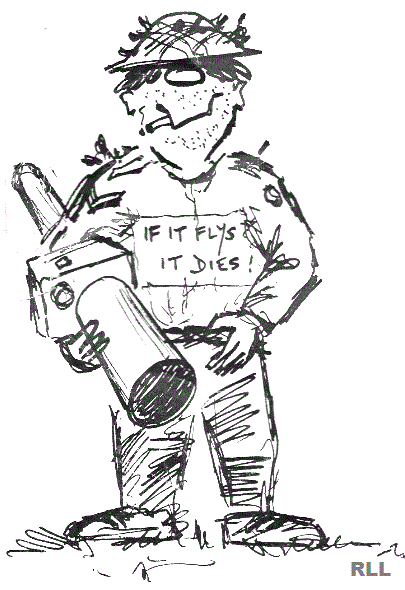 ADCIS came in before Malaysia, and was 100 million pound. It's explained in my article "What is ADCIS"
in the EASAMS Newsletter above. I quite like the informality, but if you want the public version,
it's in
ADCIS.PDF
.
Oh yes: that picture of a soldier operating an IDT, or
"Interactive Display Terminal". That was before the actual hardware was in production.
I made the case at home, from balsa wood, and sprayed in with matt green paint - good enough for a photo :-)
ADCIS came in before Malaysia, and was 100 million pound. It's explained in my article "What is ADCIS"
in the EASAMS Newsletter above. I quite like the informality, but if you want the public version,
it's in
ADCIS.PDF
.
Oh yes: that picture of a soldier operating an IDT, or
"Interactive Display Terminal". That was before the actual hardware was in production.
I made the case at home, from balsa wood, and sprayed in with matt green paint - good enough for a photo :-)
My artistic skills were also put to good use in cartoons such as this showing the percieved mentality
of "brown jobs" defending their airspace against the "brill cream boys" that had the nerve
to fly over them.
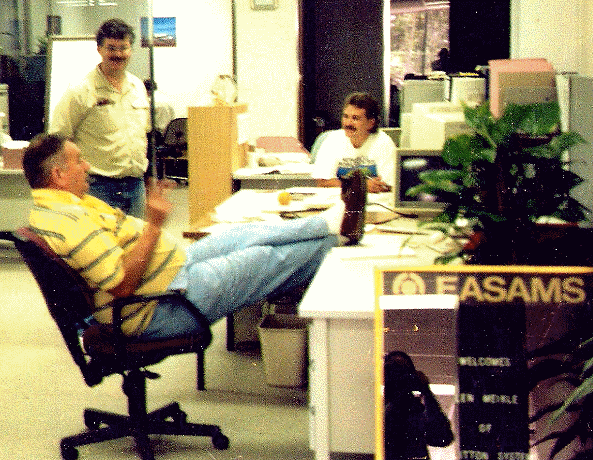 The ADCIS contract had practically been won, after years of studies and competition, due to the
efforts of David Sands, working under Norman Green. David died under mysterious circumstances.
(See first topic on my
Grumpy
page ).
Norman asked me if I could become ADCIS System Design Manager,
which meant the final 6 months of contract negotiation,
teamed with Logica. I took advice from old mate, and rascal,
Trevor Saunders
. Trevor advised me that ADCIS was "in the bag" (thanks largely to him)
and I was hooked.
The ADCIS contract had practically been won, after years of studies and competition, due to the
efforts of David Sands, working under Norman Green. David died under mysterious circumstances.
(See first topic on my
Grumpy
page ).
Norman asked me if I could become ADCIS System Design Manager,
which meant the final 6 months of contract negotiation,
teamed with Logica. I took advice from old mate, and rascal,
Trevor Saunders
. Trevor advised me that ADCIS was "in the bag" (thanks largely to him)
and I was hooked.
EASAMS had bid for ADCIS based on Norden computers, and Norden raised their prices.
Trevor was ready with valid quotes from Raytheon, a better and lower priced solution,
without telling anyone, other than Col Colvin, of MoD. Angus, EASAMS MD by then,
and Norman, were delighted when Trevor revealed his winning hand :-)
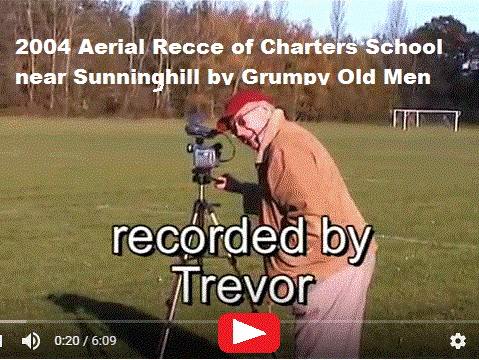
 That's Trevor, typically relaxed.
After Trevor left EASAMS, he got up to mischief with other Grumpy Old men, doing
pioneering work with fixed wing drones and rockets. First 35mm still photography, then aerial video recce.
After recce of SAMs being fired, they tested air-to-air missiles. See
TAM
page :-)
That's Trevor, typically relaxed.
After Trevor left EASAMS, he got up to mischief with other Grumpy Old men, doing
pioneering work with fixed wing drones and rockets. First 35mm still photography, then aerial video recce.
After recce of SAMs being fired, they tested air-to-air missiles. See
TAM
page :-)
The main problem facing ADCIS contract negotiation was the need for clarification of what
exactly the ADCIS software had to do. This was solved by my suggesting we have
a Man-Machine-Interface (MMI) definition phase, involving prototyping.
After EASAMS signed the ADCIS contract, it was not long before key players
left MoD, and Admiral, the "Customer's Friend" to join EASAMS.
e.g. Terry Wood of Admiral, and Martin Elbourne, the MoD ADCIS desk officer.
These guys will have their own stories to tell, through ADCIS, Malaysia,
and beyond.

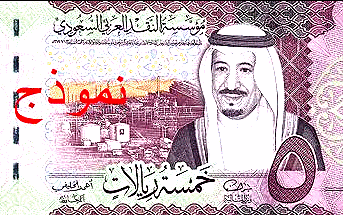 It was not all military projects at EASAMS, although guys around me helped
with selling Tornados to Saudi Arabia: the
Al-Yamamah
contract, worth over
43 billion pounds, to be paid in barrels of oil, still the UK's biggest
arms contract to date.
"Al-Yamamah" means "Dove" !
It was not all military projects at EASAMS, although guys around me helped
with selling Tornados to Saudi Arabia: the
Al-Yamamah
contract, worth over
43 billion pounds, to be paid in barrels of oil, still the UK's biggest
arms contract to date.
"Al-Yamamah" means "Dove" !
"Business Meetings" around the coffee machines discussed other projects like "SAMA"
- then the Saudi Arabian Monetery Agency ( now Authority ). EASAMS supplied the
whole Dealing Room system, including room decoration with arabic wall clock,
crpto secure satellite links to other dealing rooms around the World, and
the dual PDP11 computer system, handling vast money transfers.
I remember there was a delay in final sign-off and payment.
Easily sorted when we discovered that it was simply some of the furniture
was warped and needing replacementt :-)
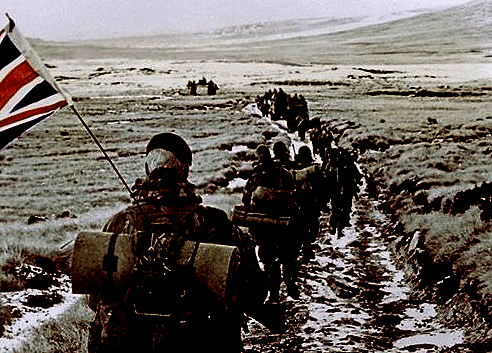 I've already mentioned the EAMACS system supplied to Saudi Arabia, but EASAMS had it's fingers
in many pies, around the World, often due to the Studies Division, led by John York.
Also, their guys often did important work behind the scences.
I recall, during the
Falklands War
of 1982, showing relevant maps on EAMACS.
However, I also remember this: someone in Studies, working on Rapier,
saw that there would be a problem in it pointing below the horizon,
when perched on a hilltop, and shooting down those sneaky and heroic
Argentinian pilots, flying at low level. Suitable work was done,
and modified equipment sent south to go on a ship to the Falklands.
Lord
Arnie Weinstock
made a call to Maggie Thatcher in Downing Street: he asked MoD
do the contract paperwork NOW! - and it happened :-)
I've already mentioned the EAMACS system supplied to Saudi Arabia, but EASAMS had it's fingers
in many pies, around the World, often due to the Studies Division, led by John York.
Also, their guys often did important work behind the scences.
I recall, during the
Falklands War
of 1982, showing relevant maps on EAMACS.
However, I also remember this: someone in Studies, working on Rapier,
saw that there would be a problem in it pointing below the horizon,
when perched on a hilltop, and shooting down those sneaky and heroic
Argentinian pilots, flying at low level. Suitable work was done,
and modified equipment sent south to go on a ship to the Falklands.
Lord
Arnie Weinstock
made a call to Maggie Thatcher in Downing Street: he asked MoD
do the contract paperwork NOW! - and it happened :-)

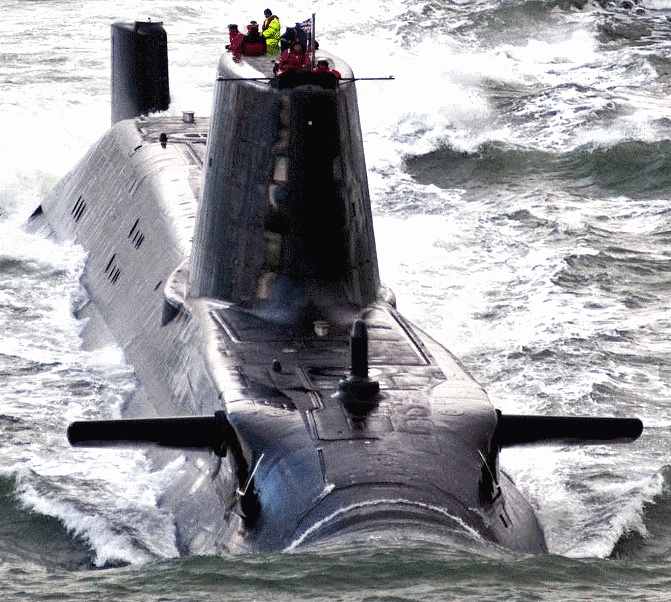 EASAMS Engineers played key roles in designing the new
Astute
class of nuclear powered hunter-killer submarines.
These were designed to be both stealthy and fast.
I must smile when I see the public figure of top speed,
when the laws of physics say they should be capable
of travelling underwater several times faster - allegedly :-)
EASAMS Engineers played key roles in designing the new
Astute
class of nuclear powered hunter-killer submarines.
These were designed to be both stealthy and fast.
I must smile when I see the public figure of top speed,
when the laws of physics say they should be capable
of travelling underwater several times faster - allegedly :-)
I must say here that guys like Vic and Rod, who were assigned to my little group,
had no need to discuss details of their work on underwater stuff, or at places like
AWE Aldermaston
. I had no "need to know", and that worked out very convenient.
Over the years at EASAMS, and since, I learnt more of their interesting work,
but from the personal aspect. e.g. having to search for classified papers,
in the bloody remains of a car crash, after an EASAMS engineer died
in an accident ( not listed in those mysterious deaths on
Grumpy
page ). Also projects like installing an Air Defence System in Iran,
and what happened after the Shah was deposed.
But they can tell their own stories if they wish :-)
I recall Lord
Arnie Weinstock
being poised to take over the remaining military ship making
company in UK. However, it was bidding against the one he already owned, for an MoD contract.
Arnie obviously waited until the contract was awarded, before making the take-over ;-)

 After the first year or so of the ADCIS project, including recruiting experienced guys,
and managing our System Design teams, under Keith Robinson, ADCIS Project Manager,
I moved back into business development, with things like our PC based
demonstrators, and "The Barossa Operation".
The following is an extract taken from my very old
Barossa
page, that was made public in 1995...
There was
no copyright on the original video which as put together by
Robin using professionals for filming, voice over and editing.
It was done on a very low budget (of about £5,000 if Robin remembers
correctly), and the detailed scripting before editing in the studio
was done by Robin, using his VCR at home. EASAMS ceased trading many
years ago, but you will see a "hard sell" near the end :-)
You will also see credits to those who contributed, including
equipment manufacturers and the RMCS team. Robin would also like to
say thanks to his friends and work mates at EASAMS who worked with
him on the field trials.
Play the
video
:-)
After the first year or so of the ADCIS project, including recruiting experienced guys,
and managing our System Design teams, under Keith Robinson, ADCIS Project Manager,
I moved back into business development, with things like our PC based
demonstrators, and "The Barossa Operation".
The following is an extract taken from my very old
Barossa
page, that was made public in 1995...
There was
no copyright on the original video which as put together by
Robin using professionals for filming, voice over and editing.
It was done on a very low budget (of about £5,000 if Robin remembers
correctly), and the detailed scripting before editing in the studio
was done by Robin, using his VCR at home. EASAMS ceased trading many
years ago, but you will see a "hard sell" near the end :-)
You will also see credits to those who contributed, including
equipment manufacturers and the RMCS team. Robin would also like to
say thanks to his friends and work mates at EASAMS who worked with
him on the field trials.
Play the
video
:-)
From Robin in 2015: The "Barossa" page was added to GPSS.co.uk in 1995. I hope you guys are all well, and you don't mind my adding this old photo below.
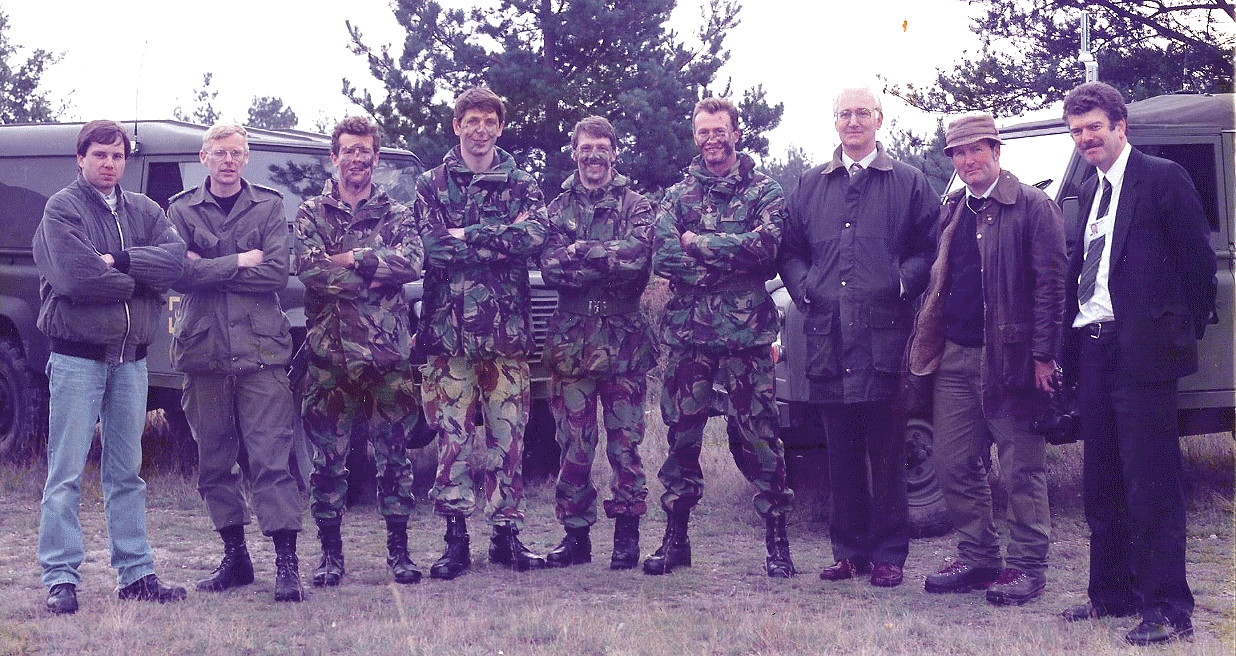


 This picture of James (Jim) McLaren, operating our EAMACS demonstrator, will have to do for now, until I've hunted through my old
35mm photo albums from EASAMS days, to find suitable photos to scan and mis-use here.
This picture of James (Jim) McLaren, operating our EAMACS demonstrator, will have to do for now, until I've hunted through my old
35mm photo albums from EASAMS days, to find suitable photos to scan and mis-use here.
That's Dave Broomfield on the right, who keeps all us EASAMS Old F*rts in touch :-)
The stuff above may give the wrong impression that successful EAMACS implementation projects, then ADCIS,
and later Laptop PC based demonstrators, as in The Barossa Operation, dominate my memories of EASAMS.
I think that the most useful work done by our little group, particularly guys like George Ward, and Jim, was
the time we spent giving demonstrations of EAMACS in UK and around the World.
It certainly contributed to winning the billion pound Malaysia Contact.
Although, I have it on good authority, that the "Long John Silver" dress-making skills of Mitch,
while in Kuala Lumpar, probably had much more effect :-)
Those overseas trips were certainly "Interesting". e.g. our trip to Belgium, to demonstrate EAMACS at a highly secret location (then),
resulted in Jim nearly being electrocuted.
Those unforgetable trips to Nigeria, Egypt, and Saudi Arabia !

EAMACS contract to supply a coastal radar tracking system to Ras Tanurah in the Gulf: Project Manager Jim; delivered and paid for in 6 months ! :-)
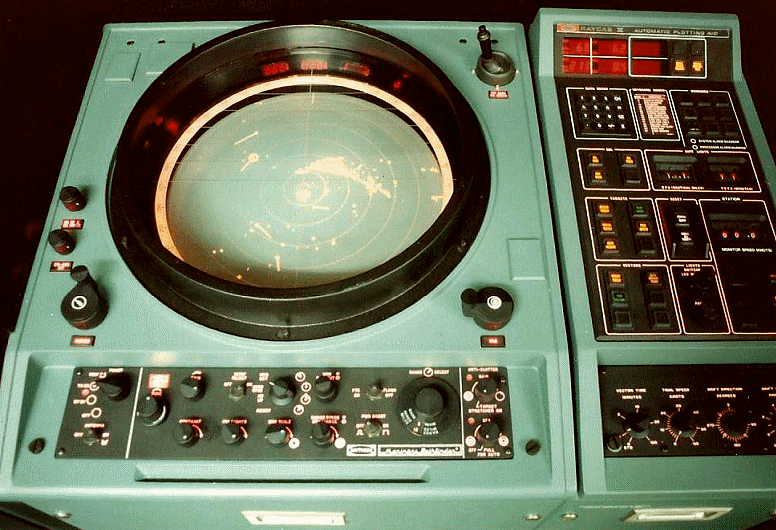
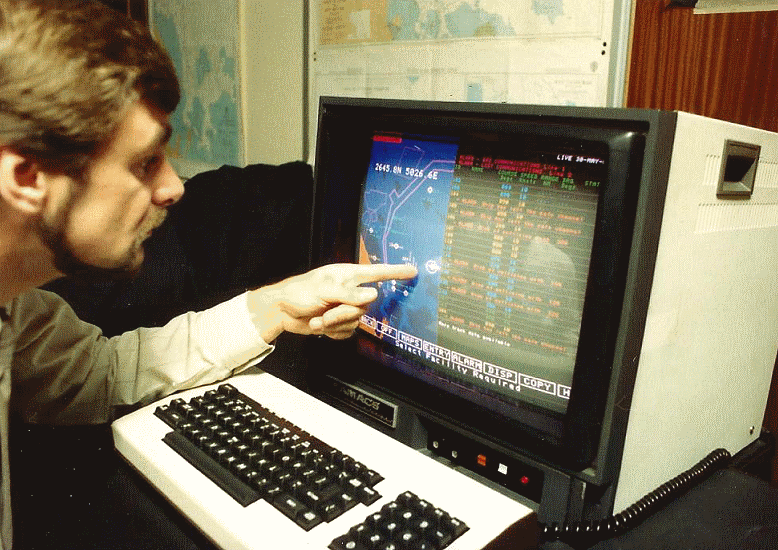
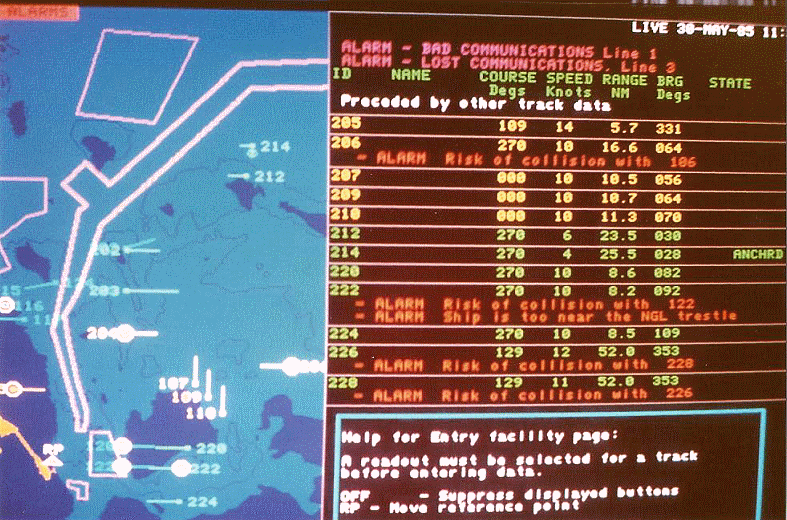
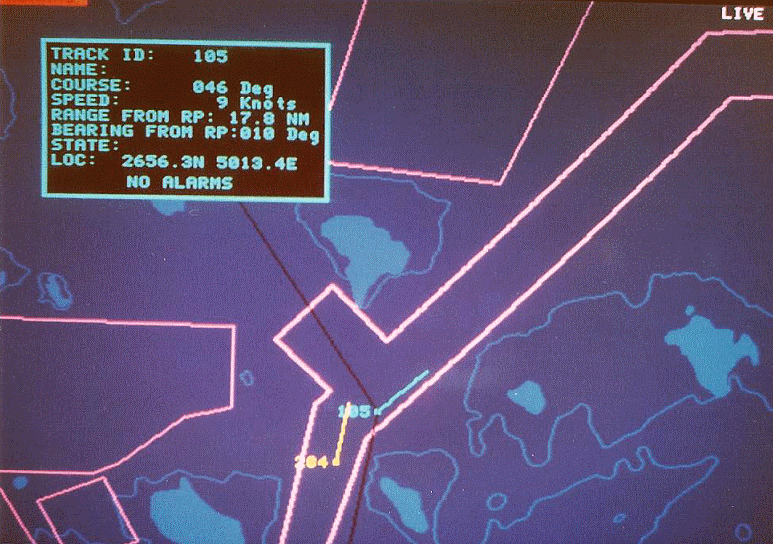

George Ward and our large screen... 3D terrain model of Malaysia ... Sue Elkington and Ben Nevis in 3D ...
Sue testing voice recognition before Saudi trip ...
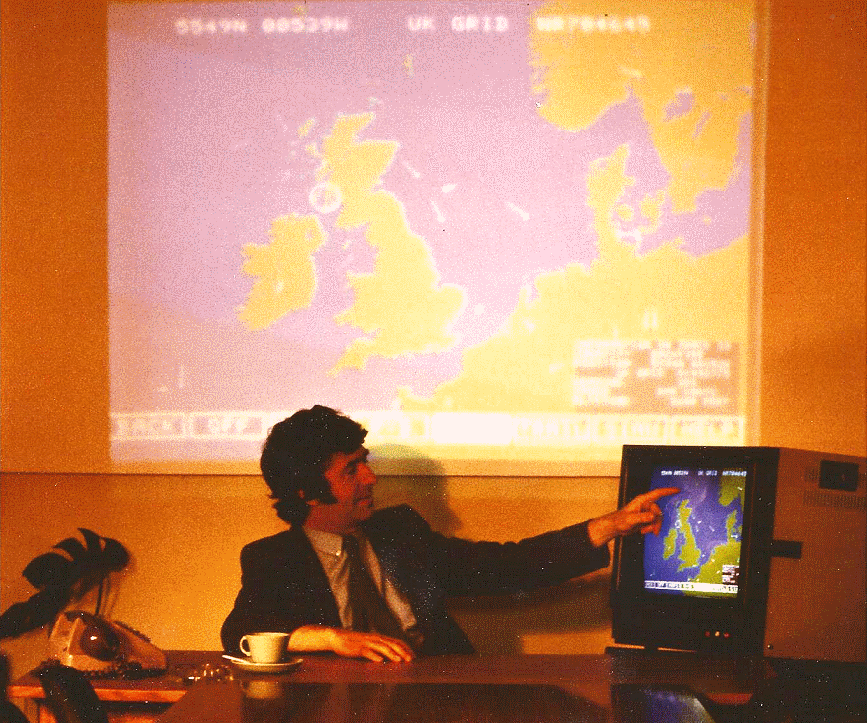
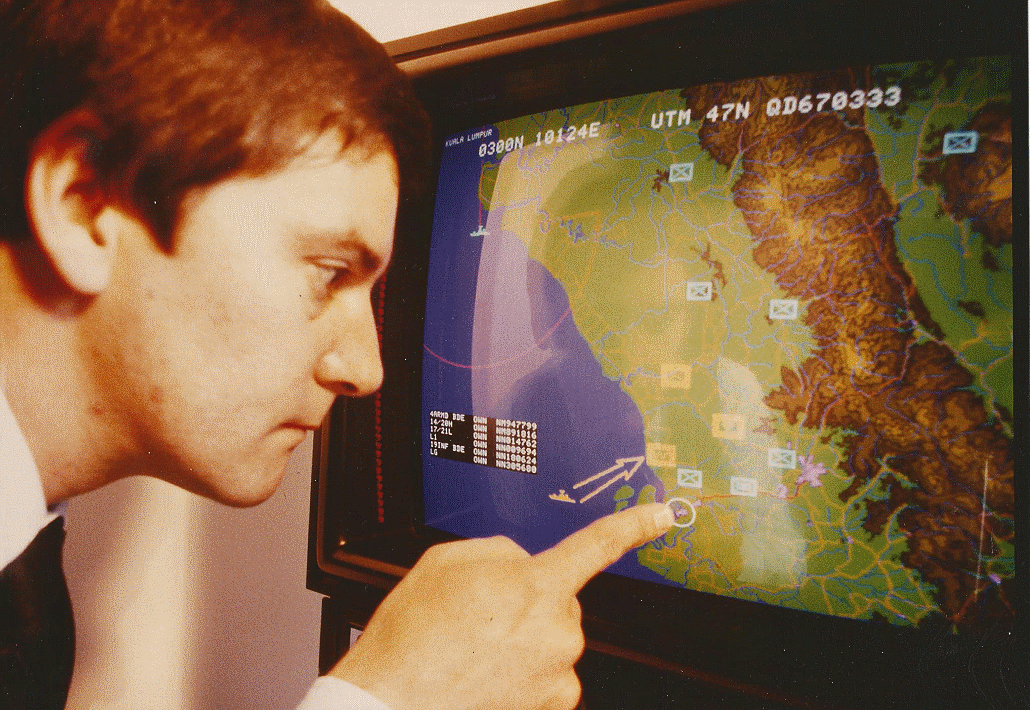
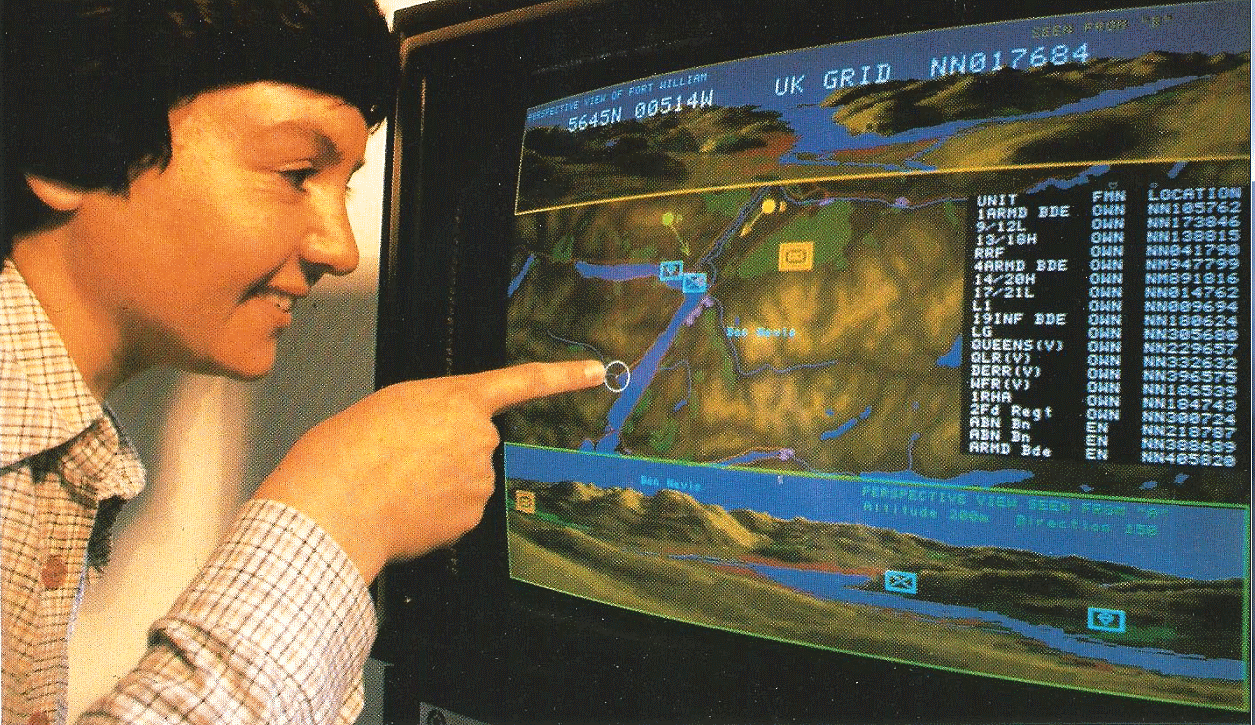
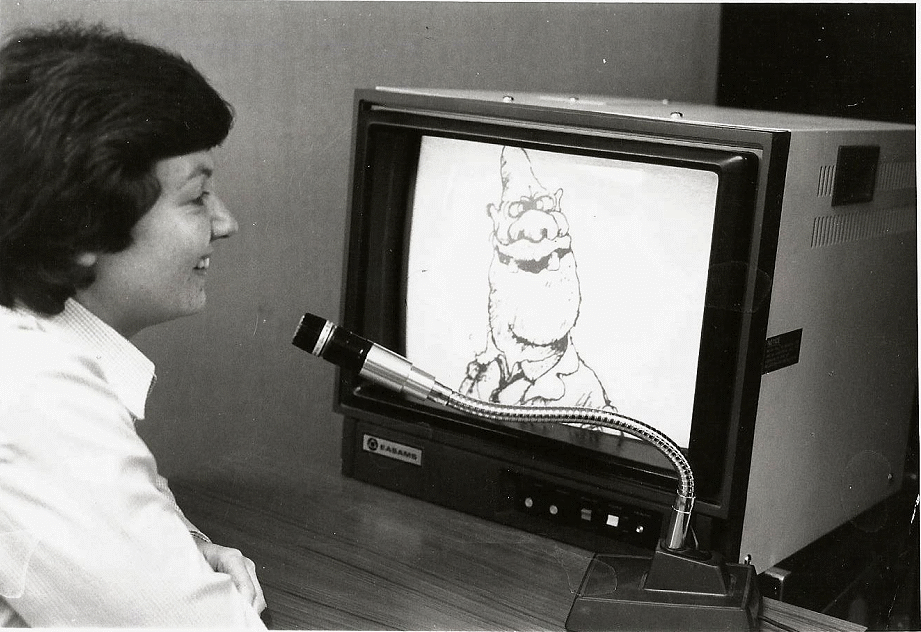

Click to enlarge. ADCIS Party in Sunninghill; I hope the ADCIS Project paid for it !
... then John Sanders & George Ward; at Battlefield Live near Chertsey ?
Demonstrations in Riyadh: English & Arabic voice recogntion: say "Ship" or "Baghera" and it displays one. EAMACS with local maps ?
Of course ! :-)
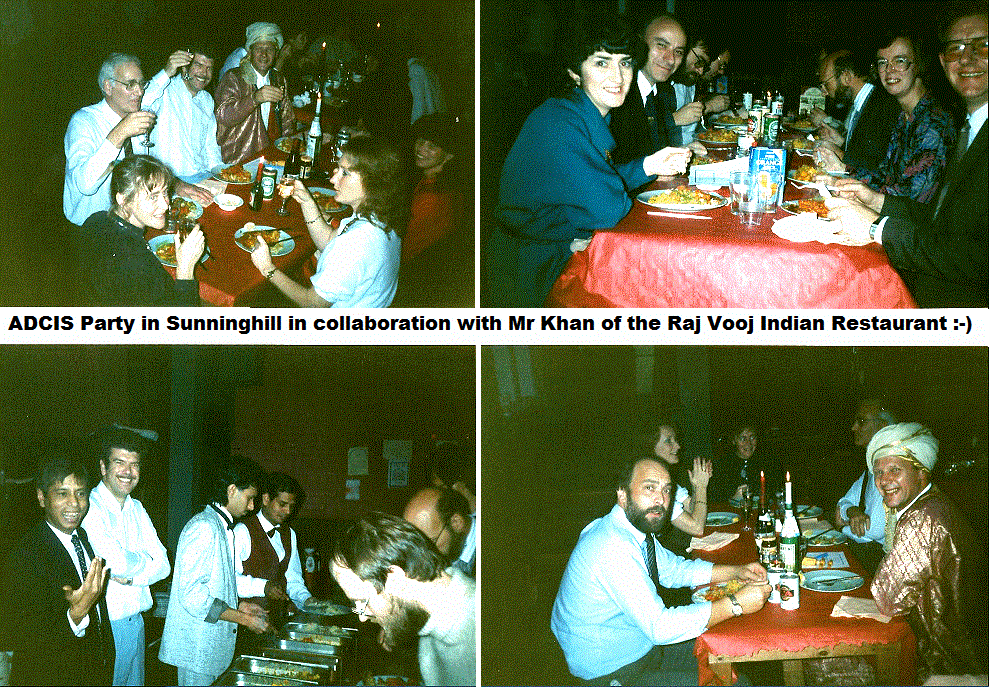
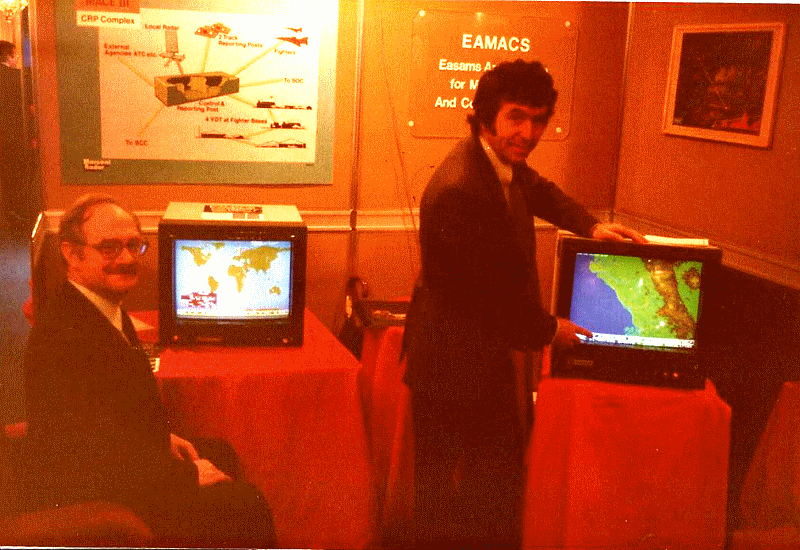

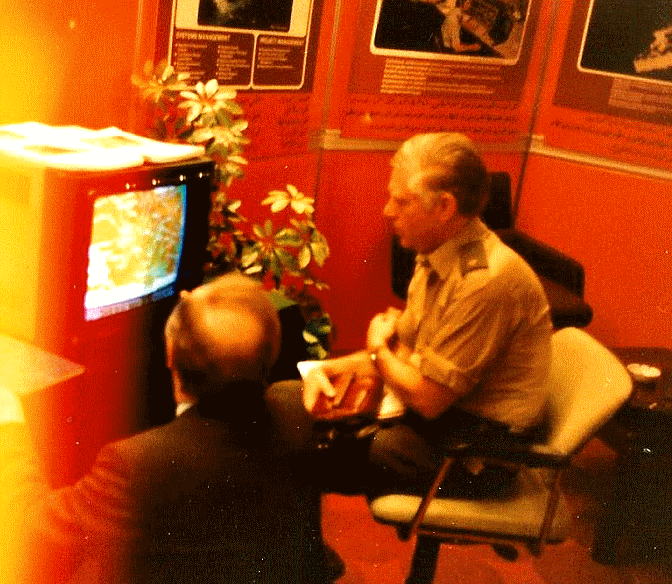

 More about the DICS bid, starting with this photo found of Sandy Sclater and myself with the guys in the
Barossa Operation.
This was filmed not long before the first Gulf War, and I often think of these guys, hoping that they returned
safely from those later tours in Iraaq and Afganistan.
More about the DICS bid, starting with this photo found of Sandy Sclater and myself with the guys in the
Barossa Operation.
This was filmed not long before the first Gulf War, and I often think of these guys, hoping that they returned
safely from those later tours in Iraaq and Afganistan.
I hope to find a photo or two from that time on the DICS Bid. e.g. Trevor Saunders,
lighting up six fags in his mouth, when our bid team relaxed late in the evening, having done our writing
and wheeler-dealing with suppliers. We had one female member. She would spend the night typing,
but get away in time to take her kids to school in the morning !
My time was mostly spent making cups of coffee, or popping out to bring back take-away lunches or dinners
for the team.
During that hectic week of submitting our written bid to MoD, we also had the required desert-worthy Laptop PCs
up and running downstairs, ready to demonstrate. This was when Louden Keir, still in the TA, said he thought
his mate might be able to swing a Herc' flight, so we could demonstrate the kit in the desert.
At that time the air war was in full swing, and our troops soon ready to go into Kuwait and Iraaq.
I knew the trip would be made by Louden, Trevor, and myself. I made a 'phone call to my wife June, while we all
sat around, smoking and drinking beer or coffee. The team shared that conversation with June...
"June, Louden says we might take a flight, to demonstrate the kit to the guys in the desert".
Her most relaxed response was, "OK - I'll find that white lightweight suit that you wore to Lagos".
We all roared with laughter - obviously no concerns about hubby going into a war zone.
Also, on reflection, I doubt if those "minding" us, would have taken kindly to my wearing a bright white suit ! :-)

Sunninghill Systems - Robin's GPS Software business ...
Recent years - Hobbies & Charity ...

Perhaps the simplest thing is to give you this extract from Robin's
AsOnTV - GPS Software as seen on Television page. Visit the page for more detail ;-)
 In short: software such as that used at EASAMS for EAMACS and The Barossa Operation, was based on that written by myself
at SHAPE Technical Centre, in the 1970s, or at home, in the late 1980s. I had already started to trade,
on things like the BT demonstrator for Martlesham Heath, before the Marconi company collapsed, dragging
EASAMS down with it. I still own Intellectual Property and copyright on lots of things you will see
in these old videos - particularly that one directed by Nick Knowles. But, knowing lots of people,
there are more important things in life than making lots of money. Of course, you can always
help others, if they help you and others to "do some good" ;-)
In short: software such as that used at EASAMS for EAMACS and The Barossa Operation, was based on that written by myself
at SHAPE Technical Centre, in the 1970s, or at home, in the late 1980s. I had already started to trade,
on things like the BT demonstrator for Martlesham Heath, before the Marconi company collapsed, dragging
EASAMS down with it. I still own Intellectual Property and copyright on lots of things you will see
in these old videos - particularly that one directed by Nick Knowles. But, knowing lots of people,
there are more important things in life than making lots of money. Of course, you can always
help others, if they help you and others to "do some good" ;-)



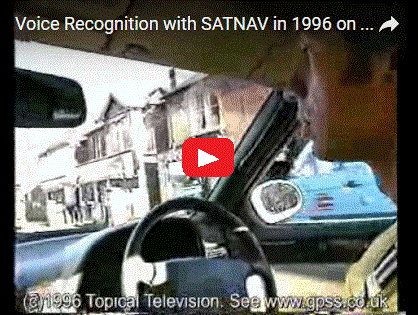
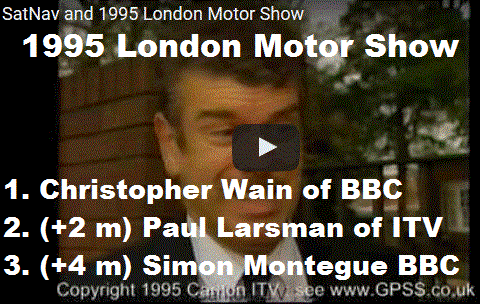
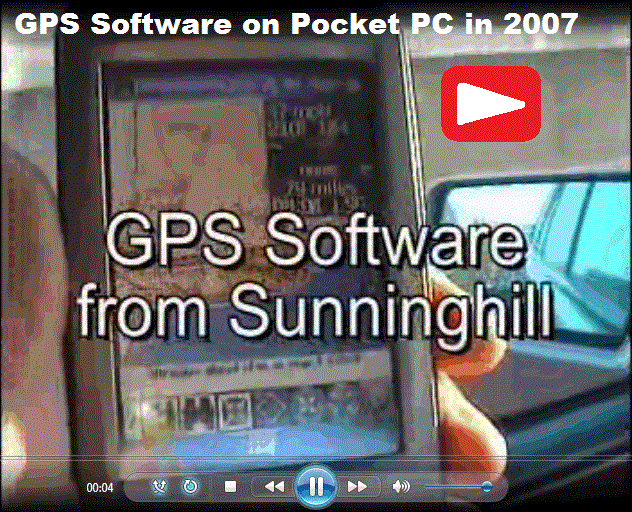
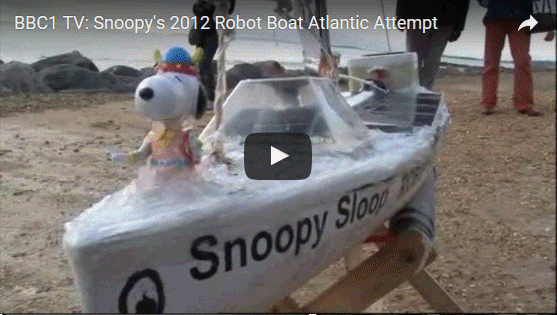

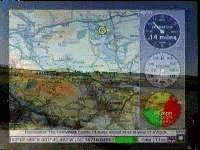
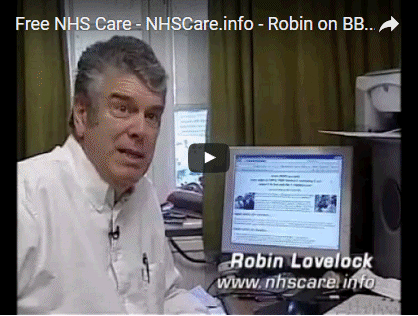
Robin has also appeared on TV
a number of times, related to his charity web site
www.NHSCare.info,
set up in 2003 to provide advice on obtaining free NHS long term care.
He appeared on BBCTV's "The Politics Show", BBC News 24, and Sky TV.
However, Robin was rarely the "front man" in these broadcasts: others, far more eloquent, appeared in many more broadcasts,
including Steve Squires, Derek Cole, Ian Perkins, Bleddyn Hancock, and Pam Coughlan herself.
Robin simply maintains his web pages, and puts journalists in contact
with the right people.

List of TV broadcasts in UK, BBC Worldwide, and Radio across USA Networks and AFN ...
 from 1992: the military origins of Robin's GPS Software: see the
The Barossa Operation page and play the
Barossa Operation video;
from May 1995:
GPS Software on Meridian TV News
: our first TV publicity. More detail is at the bottom of this "AsOnTV" page.
from October 1995:
The London Motor Show
: extracts of TV News coverage, from BBC and ITV, both National and Local.
from 1996: an extract from
GPSS on Put It To The Test
broadcast on ITV then BBC1 TV nationwide. Click on Youtube video -->
from 1998: not TV, but read
"Into Tomorrow" interview, broadcast on 75 USA Radio Networks and Worldwide on
American AFN.
Robin's December 2007 attempt at a promotional video: "
GPS Software from Sunninghill
" (10MB)
2008 until now: crazy
Snoopy Sloop robot boat page.
<-- Checkout the many videos, linked from here !
from 2008: amusing spoof video is on
Robin effects USA Election result ? - what could have happened :-)
the Lovelock family take up dancing, dressed as elves for Christmas: checkout the video
"here" :-)
from 1992: the military origins of Robin's GPS Software: see the
The Barossa Operation page and play the
Barossa Operation video;
from May 1995:
GPS Software on Meridian TV News
: our first TV publicity. More detail is at the bottom of this "AsOnTV" page.
from October 1995:
The London Motor Show
: extracts of TV News coverage, from BBC and ITV, both National and Local.
from 1996: an extract from
GPSS on Put It To The Test
broadcast on ITV then BBC1 TV nationwide. Click on Youtube video -->
from 1998: not TV, but read
"Into Tomorrow" interview, broadcast on 75 USA Radio Networks and Worldwide on
American AFN.
Robin's December 2007 attempt at a promotional video: "
GPS Software from Sunninghill
" (10MB)
2008 until now: crazy
Snoopy Sloop robot boat page.
<-- Checkout the many videos, linked from here !
from 2008: amusing spoof video is on
Robin effects USA Election result ? - what could have happened :-)
the Lovelock family take up dancing, dressed as elves for Christmas: checkout the video
"here" :-)
All Robin's youtube videos are on
www.youtube.com/user/RobinLovelock
or, if that fails,
here.
End of extract :-)

... End of draft C.V above .. (parts of ) original "holding page" below ...

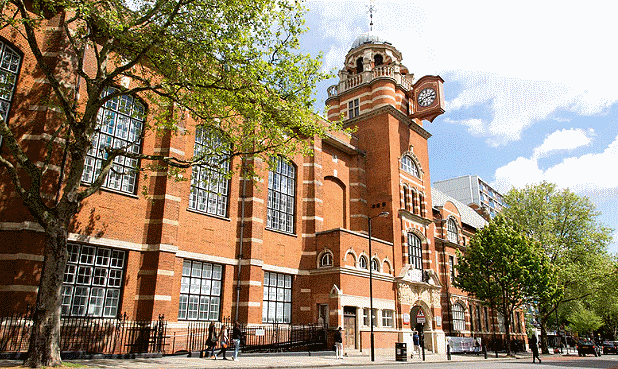
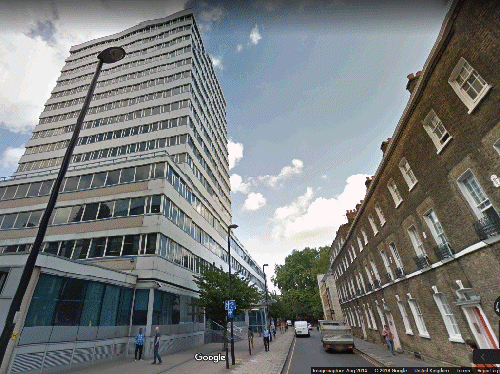
Robin Lovelock's Memories of
City University
( their website is
www.city.ac.uk
)
with some stuff from my "Home" page.
















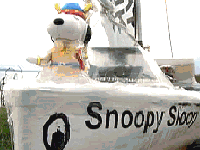
 From Robin Lovelock:
I officially retired in 2012, but my wife June says that I retired 10 years before ! GPSS.co.uk began in 1995
for my GPS Software business - now a hobby.
Millions of copies of GPSS were distributed on PC Magazine CD.
10,600 + people in 150 countries contacted me then used GPSS.
SatNav was not easily available then, and GPSS did much more. e.g. RDF, AVL, and Chase.
GPSS speaks your language. e.g. Russian or Japanese.
Some of my pages are old, and some are updated.
e.g. Snoopy's attempts to cross the Atlantic from UK to USA, every year since 2012.
See
Snoopy's Robot Sailing Boat
or click on the changing picture to the right.
Since 2002, I maintain the
NHSCare.info Coughlan Campaign Charity site,
helping people in the UK to use the Law to get
free long term care from the NHS, and not have to pay for the care home.
I also have inside knowledge
into UK NHS mental health treatment.
See my
Grumpy
page, with my personal views on World events.
Much of GPSS.co.uk has changed little over more than 20 years.
Since I retired, I'm too busy for paid work.
Visit my
Bigger Picture
page, to see how we spend time.
e.g.
Hobbies
and
Holidays
:-)
From Robin Lovelock:
I officially retired in 2012, but my wife June says that I retired 10 years before ! GPSS.co.uk began in 1995
for my GPS Software business - now a hobby.
Millions of copies of GPSS were distributed on PC Magazine CD.
10,600 + people in 150 countries contacted me then used GPSS.
SatNav was not easily available then, and GPSS did much more. e.g. RDF, AVL, and Chase.
GPSS speaks your language. e.g. Russian or Japanese.
Some of my pages are old, and some are updated.
e.g. Snoopy's attempts to cross the Atlantic from UK to USA, every year since 2012.
See
Snoopy's Robot Sailing Boat
or click on the changing picture to the right.
Since 2002, I maintain the
NHSCare.info Coughlan Campaign Charity site,
helping people in the UK to use the Law to get
free long term care from the NHS, and not have to pay for the care home.
I also have inside knowledge
into UK NHS mental health treatment.
See my
Grumpy
page, with my personal views on World events.
Much of GPSS.co.uk has changed little over more than 20 years.
Since I retired, I'm too busy for paid work.
Visit my
Bigger Picture
page, to see how we spend time.
e.g.
Hobbies
and
Holidays
:-)


 I entered Defence Industry as an apprentice in the mid 1960s.
Ferranti
sent me to
City University
for a B.Sc in Electrical & Electronic Engineering.
That's where I saw
Dr Strangelove
.
I became a Systems Engineer, and work included Royal Navy ship software.
I worked for SHAPE as a NATO scientist through the 1970s, when GPS and the Internet were secret.
See
Robin's memories of SHAPE Technical Centre and John Maniello
.
Our young family returned to the UK in late 1980 and
I worked for
EASAMS
until starting our small
GPS Software business in 1994 - now a hobby.
In publicity about Snoopy's Robot Boat, the Press called me a "Retired NATO Scientist".
Perhaps that should be "Mad Retired NATO Scientist" :-)
I entered Defence Industry as an apprentice in the mid 1960s.
Ferranti
sent me to
City University
for a B.Sc in Electrical & Electronic Engineering.
That's where I saw
Dr Strangelove
.
I became a Systems Engineer, and work included Royal Navy ship software.
I worked for SHAPE as a NATO scientist through the 1970s, when GPS and the Internet were secret.
See
Robin's memories of SHAPE Technical Centre and John Maniello
.
Our young family returned to the UK in late 1980 and
I worked for
EASAMS
until starting our small
GPS Software business in 1994 - now a hobby.
In publicity about Snoopy's Robot Boat, the Press called me a "Retired NATO Scientist".
Perhaps that should be "Mad Retired NATO Scientist" :-)

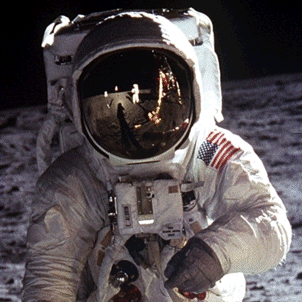 The photos below were from my last year, staying in the Hall of Residence.
The earlier years are discussed further below, along with memories of the Ferranti Pegasus
and FM1600B computers, used in City University's Electrical & Electronic Engineering Department.
Then, 50 years on, there are photos from the reunion events.
The photos below were from my last year, staying in the Hall of Residence.
The earlier years are discussed further below, along with memories of the Ferranti Pegasus
and FM1600B computers, used in City University's Electrical & Electronic Engineering Department.
Then, 50 years on, there are photos from the reunion events.
Lots could be put here, but let me mention watching Dr Strangelove for the first time,
projected on the wall, with plumbing in the picture. Also, watching the first man on the Moon live. How strange that both of these
would relate to my later years as a NATO Scientist and my
memories of SHAPE Technical Centre
.
Here are a few old photos I found, and memories, including a few student pranks.
But play that "Health Warning" video on the left. Don't do what we did - allegedly ! :-)
( CITY UNIVERSITY MATERIAL REMOVED TO REDUCE SIZE - but it's all on
www.gpss.co.uk/cityuni.htm
:-)
.

Who has visited this "ROBINSCV" page ?
 From Robin: It's very convenient for me, that there are so few visitors to this page: just those given the link.
See map and words near end of my
Home
page ;-)
From Robin: It's very convenient for me, that there are so few visitors to this page: just those given the link.
See map and words near end of my
Home
page ;-)
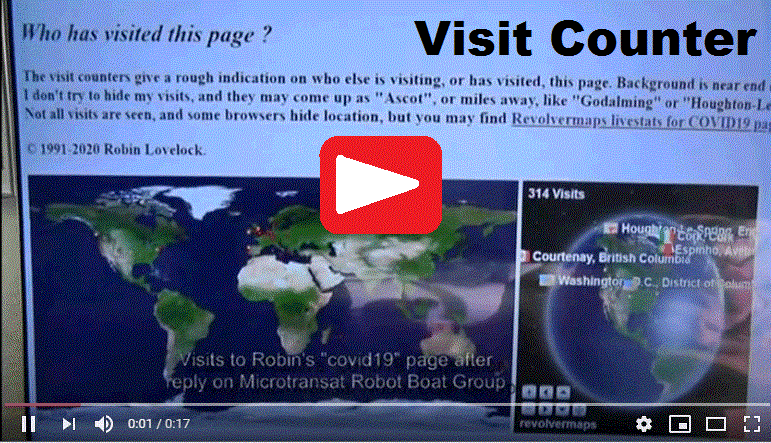 The visit counters may give a rough indication on who else is visiting, or has visited, this page.
I don't hide or disguise my visits, but they may appear as "Ascot", or miles away, like "Southend-on-Sea, England" (on my Lounge PC),
or "Nottingham, England" ( on the Study PC).
Positions may not be accurate, but times are.
These may change at any time, without control by me.
e.g. if we have a power cut, or I reboot a router.
So, you may see if I'm "working" in the Study, or "playing" in Lounge :-)
The visit counters may give a rough indication on who else is visiting, or has visited, this page.
I don't hide or disguise my visits, but they may appear as "Ascot", or miles away, like "Southend-on-Sea, England" (on my Lounge PC),
or "Nottingham, England" ( on the Study PC).
Positions may not be accurate, but times are.
These may change at any time, without control by me.
e.g. if we have a power cut, or I reboot a router.
So, you may see if I'm "working" in the Study, or "playing" in Lounge :-)
Not all visits are seen, and some browsers hide location, but you may find
Revolvermaps livestats for ROBINSCV page
interesting.
The video on the right shows several guys visiting at the same time, after I posted the link on the
Microtransat
forum :-)
© 1991-2024 Robin Lovelock.
There have been
 visits to this page counted by
www.digits.net.
visits to this page counted by
www.digits.net.



 I am NOT seeking paid work, but can sometimes help those who help me or others. "Business" can overlap with "Charity" ;-)
I am NOT seeking paid work, but can sometimes help those who help me or others. "Business" can overlap with "Charity" ;-)





 The FM1600B was the new Ferranti computer that found it's way into many systems, including the CAAIS
for the Royal Navy Frigates, which I worked on after graduation.
The FM1600B was the new Ferranti computer that found it's way into many systems, including the CAAIS
for the Royal Navy Frigates, which I worked on after graduation.
















 It was not all military projects at EASAMS, although guys around me helped
with selling Tornados to Saudi Arabia: the
It was not all military projects at EASAMS, although guys around me helped
with selling Tornados to Saudi Arabia: the
 I've already mentioned the EAMACS system supplied to Saudi Arabia, but EASAMS had it's fingers
in many pies, around the World, often due to the Studies Division, led by John York.
Also, their guys often did important work behind the scences.
I recall, during the
I've already mentioned the EAMACS system supplied to Saudi Arabia, but EASAMS had it's fingers
in many pies, around the World, often due to the Studies Division, led by John York.
Also, their guys often did important work behind the scences.
I recall, during the
 EASAMS Engineers played key roles in designing the new
EASAMS Engineers played key roles in designing the new

